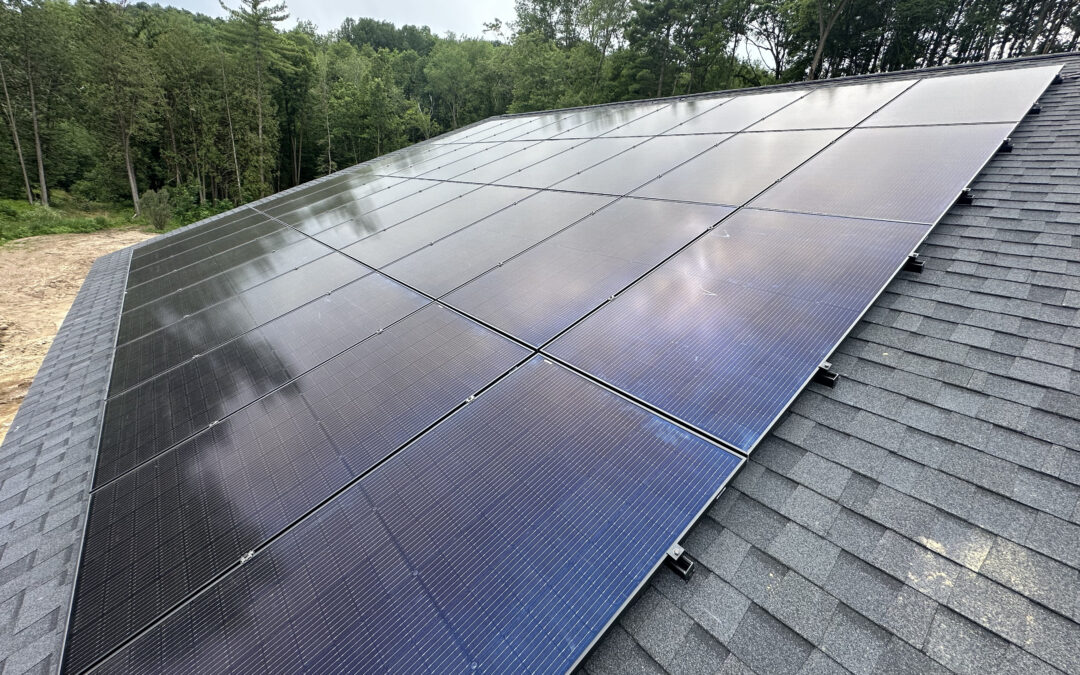As the demand for renewable energy continues to rise, more homeowners and businesses are turning to solar power systems to reduce their energy costs and carbon footprint. At Lydon Solar, we specialize in designing and installing efficient and reliable solar power systems tailored to meet the specific needs of our clients. In this blog post, we’ll explore the components of solar power systems, with a particular focus on microinverter systems, and discuss the advantages of adding battery storage and generator integration.

Key Components of Solar Power Systems
A solar power system consists of several key components that work together to capture, convert, and store solar energy. Here’s a breakdown of the essential elements:
- Solar Panels: Solar panels, also known as photovoltaic (PV) panels, are the most visible component of a solar power system. They capture sunlight and convert it into direct current (DC) electricity. Solar panels are typically installed on rooftops or ground-mounted structures to maximize exposure to sunlight.
- Inverters: Inverters are critical components that convert the DC electricity generated by the solar panels into alternating current (AC) electricity. The type of electricity used by most household and business appliances is AC. There are two main types of inverters: string inverters and microinverters.
- Mounting Systems: Mounting systems are used to securely attach solar panels to rooftops or ground-based structures. These systems are designed to withstand various weather conditions and ensure optimal panel orientation for maximum energy production.
- Monitoring Systems: Monitoring systems provide real-time data on the performance of the solar power system. They allow users to track energy production, detect issues, and optimize system efficiency.
Focus on Microinverter Systems
Microinverters are an increasingly popular choice for both residential and commercial solar power systems. Unlike traditional string inverters, which connect multiple solar panels to a single inverter, microinverters are installed on each individual panel. This setup offers several advantages:
- Increased Energy Production: Microinverters optimize the performance of each panel independently. This means that shading, dirt, or damage affecting one panel doesn’t impact the entire system’s performance, resulting in higher overall energy production.
- Improved System Reliability: Microinverters enhance the reliability of the solar power system. If one microinverter fails, the rest of the system continues to operate normally, minimizing downtime and maintenance costs.
- Enhanced Safety: Microinverters reduce the risk of high-voltage DC electricity on rooftops, enhancing the safety of the solar power system.
- Scalability: Microinverter systems are highly scalable, making it easy to expand the system by adding more panels and microinverters without significant reconfiguration.

Adding Battery Storage and Generator Integration to Solar Power
One of the most significant advancements in solar power technology is the ability to add battery storage and generator integration. These additions provide several benefits:
- Battery Storage: Battery storage systems allow homeowners and businesses to store excess energy generated by their solar panels for use during periods of low sunlight or power outages. This ensures a continuous power supply, enhances energy independence, and maximizes the use of renewable energy.
- Peak Shaving: Battery storage can reduce electricity costs by supplying stored energy during peak demand periods when utility rates are highest.
- Backup Power: In the event of a power outage, battery storage systems provide reliable backup power, ensuring that essential appliances and systems remain operational.
- Generator Integration: Integrating a generator with a solar power system provides an additional layer of energy security. Generators can supply power during extended periods of low sunlight or prolonged outages, ensuring uninterrupted power for critical operations.
- Hybrid Systems: Combining solar power with battery storage and generator integration creates a hybrid system that offers maximum reliability and flexibility. This setup ensures that homes and businesses have access to a steady power supply, regardless of weather conditions or grid outages.

Solar Power Solutions
Solar systems offer a sustainable and cost-effective solution for reducing energy costs and environmental impact. Understanding the key components of these systems and the benefits of these components can help buyers make smart solar decisions.
Let Lydon Solar and Lydon Electric customize a system to meet your needs. Contact us today for a free estimate or more information!

